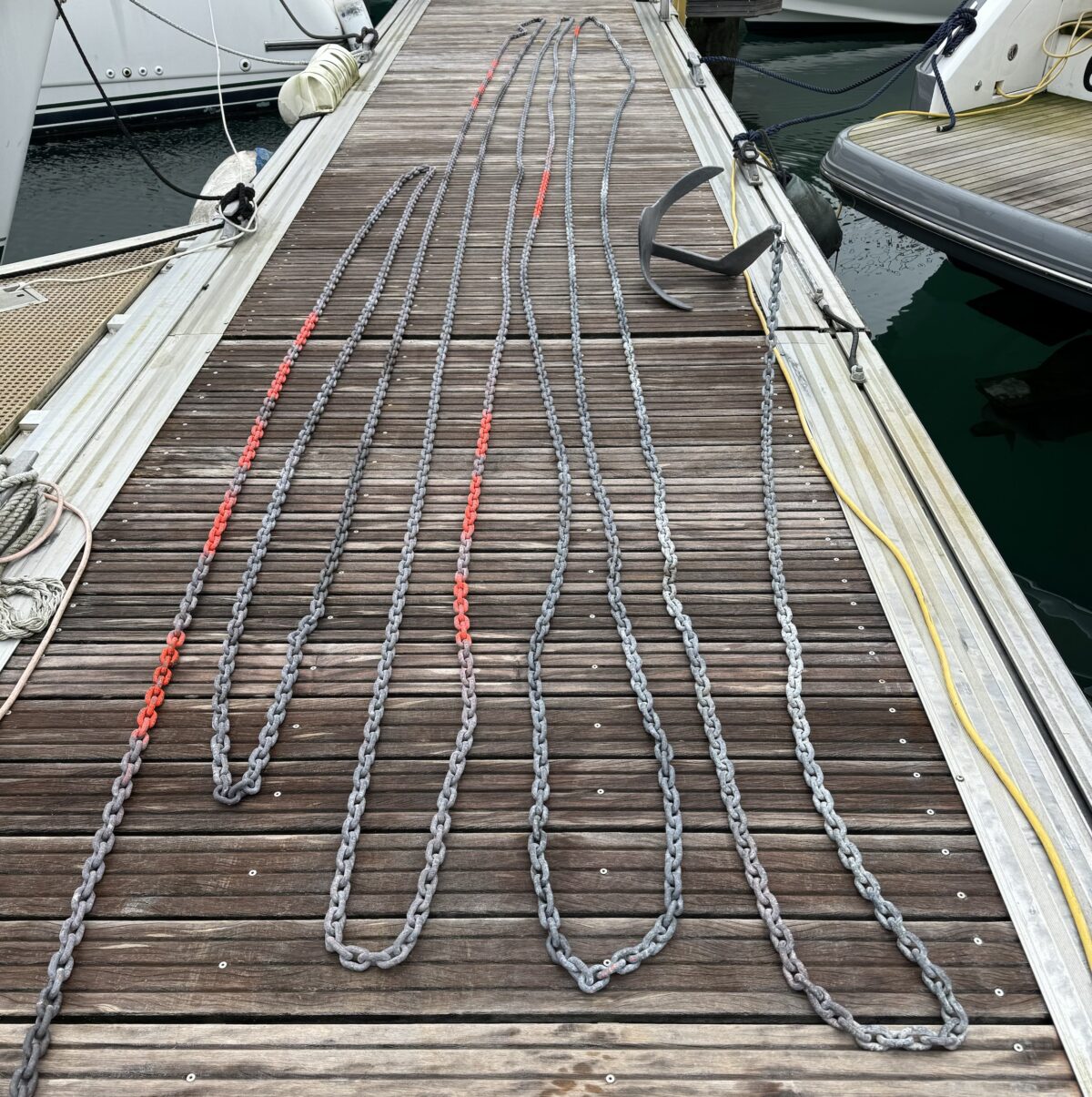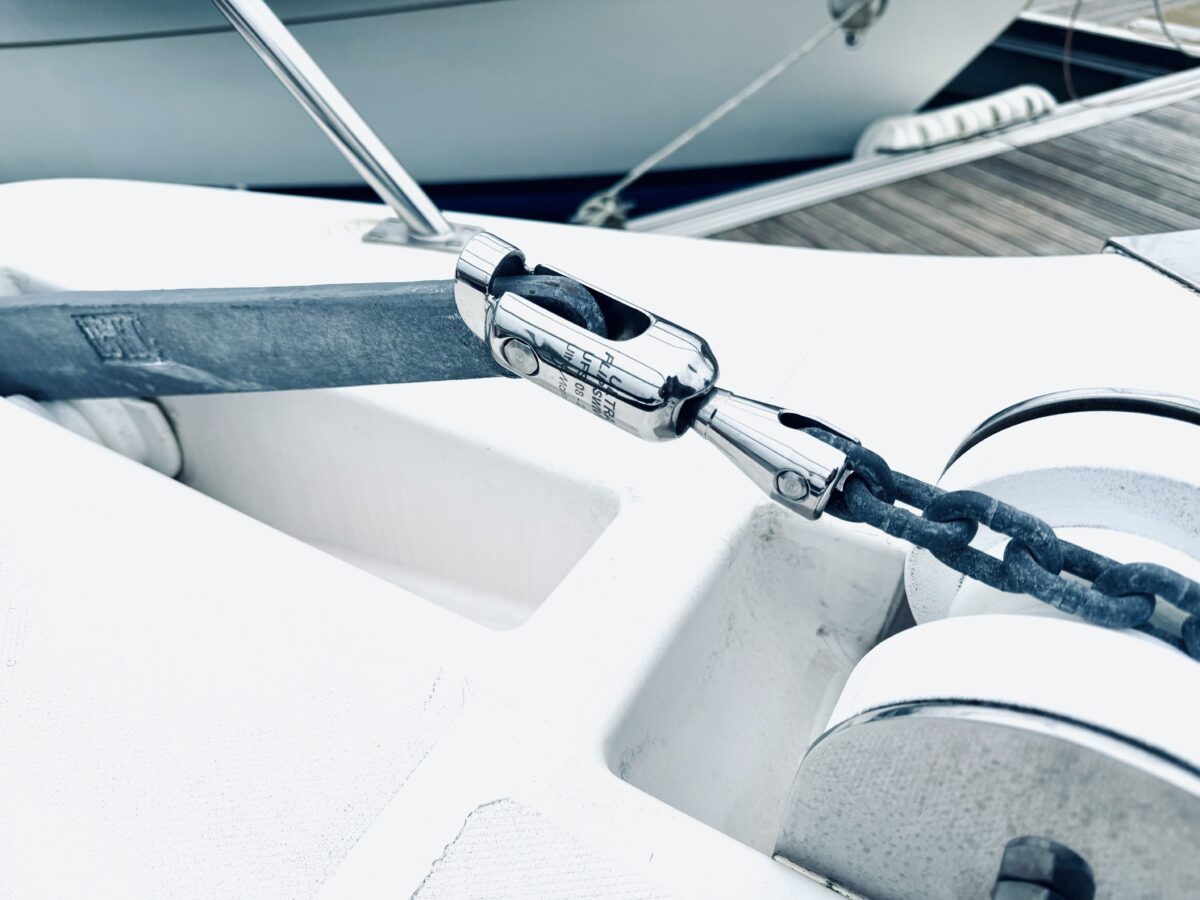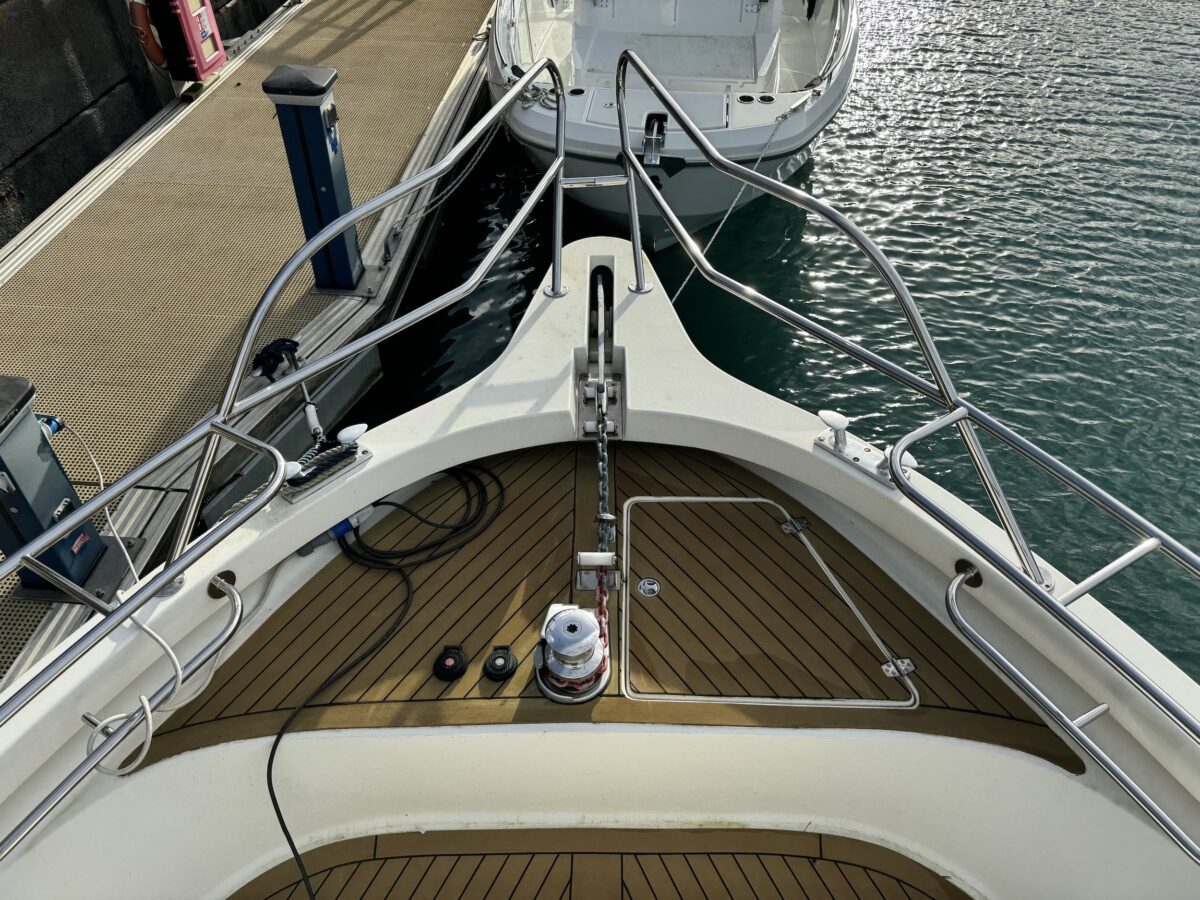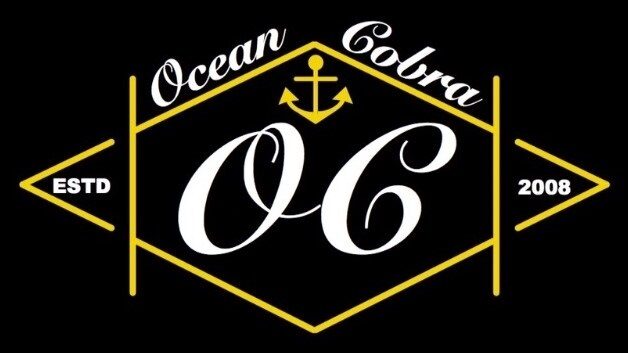We’ve all heard the saying “A chain is only as strong as it’s weakest link”
Intro
As much as we’d like it to, the weather doesn’t always give flat calm seas and hot sunny days so taking advantage of carrying out some maintenance checks, is a great use of time, to save carrying out maintenance work or breakdowns when the weathers perfect and you want to be out at sea.

Checking the chain
Pulling out all your ground tackle, whether it be cable, chain or rope, might sound like a chore but it might save you the embarrassment when you’re sat on the beach watching your pride and joy drift away because a chain link has snapped or a shackle has parted.
A chain is only as strong as it’s weakest link so taking the time to check it will show any potential problems before they happen. There are generally two types of chain commonly used. Galvanised and stainless steel.
Galvanised is the cheaper and most common, with strong and hard wearing properties. Despite this it’s important to check for rust spots where the galvanised coating may have worn away.
The other option, stainless steel, is common amongst the larger more expensive boats for aesthetics. Despite the cost of stainless chain, it is again important to check it, especially for stress cracks.
Regardless of which chain you have, you should be sure to check for wear on the links. As the chain rubs, it can wear down the links until they lose all their strength and part under the strain of the boat at anchor.
Should you have markers included, indicating the length, it’s also a good idea to check whether they need repainting as in the picture below or if any markers are missing and need replacing if using chain markers.

Swivels & Shackles
Checking the chain is all well and good but it’s useless unless it’s connected at both ends! Especially the bitter end. You may have heard the term ‘until the bitter end’, well this originates as a nautical term referring to the most inboard part connecting the chain to the boat to ensure the anchor cannot be payed out further than the length of the rode. Ensure any shackles are wired to avoid them undoing and should you have swivels fitted between the chain and anchor, check they spin freely. Some swivels may require lubricating so check with the manufacturers recommendations.
Swivels like this pictured below, the Ultra Marine flip swivel, can be fitted to most anchors and are designed to be self lubricating. They are also designed to flip the anchor the correct way prior to it coming through the bow roller.

Windlass
Pulling the rode out is also the perfect opportunity to check the operation of the windlass/winch. Using the winch handle and releasing the clutch will check the chain runs smoothly and freely out, should you ever need it to. It also gives the opportunity to run the winch, via the controls, to pull the chain in and make sure there are no issues with the chain twisting through the rollers or jamming in the block. Getting the spanners out and checking the bolts, which hold the winch is also a good idea. A lot of strain can be put on the winch when it’s retrieving the anchor and over time the vibration can losen the nuts, especially if they aren’t Nyloc’s or don’t have spring washers.

If you’re interested in finding out more about the Ultra swivel or any other Ultra products, send us an email or message and we will put you in touch with an approved dealer who will advise you on sizing and prices.
Smooth seas.
Ocean Cobra Limited has no association with any product mentioned. We only recommend products based on our own experience. Full disclaimer can be found here
